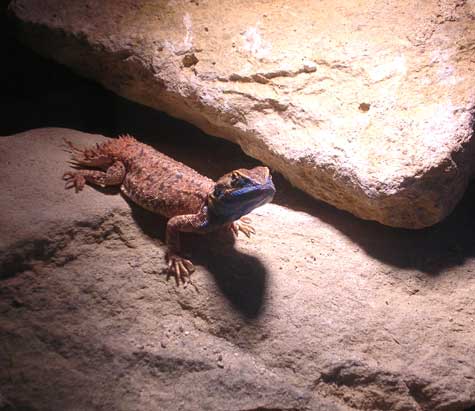Type the name of the breed you're looking for below
[wpdreams_ajaxsearchlite] Don't see the breed your're looking for? Click here and let us know!
Shield-Tailed Agama
| Place of Origin and Range | The Shield-Tailed Agama is a lizard found in Somalia and Ethiopia. |
| Description | As its size makes it vulnerable to even small predators, it uses its spiny tail to block its burrows at night. Small, greyish or reddish colour. Broad spiny tale half way, the rest is spiny and thin. The head is wide and prominent. |
| Morph Patterns Available | Yes |
| Adult Size | Can grow up to 4.5 in ( 11.25 cm ) |
| Accommodation | It lives on arid, flat land, sometimes on hilly landscapes, sandy but also hard grounds, where it digs deep galleries. It survives at 50°C maximum temperature, but average ranges between 35°C in very dry environments, with the exception of strong spring storms and high humidity. |
| Lifespan | Can live 5+ years |
| Feeding / Diet | This small lizard is essentially insectivorous, but has been seen to eat grasses, fruits, and berries. |
| Breeding | The species is sexually dimorphic; males are thinner and smaller and their chins turn blue when excited. Males have larger anal pores enclosed by a waxy yellow substance. |



